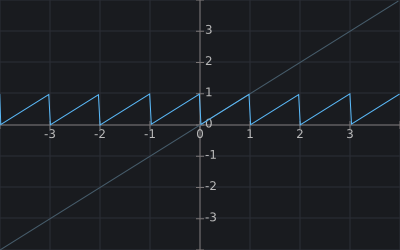Frac Node

Description
Outputs the fractional (or decimal) part of the input scalar value (or individual components of input vectors); which is greater than or equal to 0 and less than 1. Simply put it does something like: Input - Floor( Input ), which removes the integer part of the value leaving only the fractional one.
Usage Examples
Example 1
The Frac node takes Vertex Position coordinate along the X axis in object's local space Scaled by 4 with the Multiply node and provides Albedo values for the Material changing the color from black (0,0,0) to white (1, 1, 1) across each 1/4 units of length along the X axis.
Last update:
2022-10-10
Help improve this article
Was this article helpful?
(or select a word/phrase and press Ctrl+Enter)
